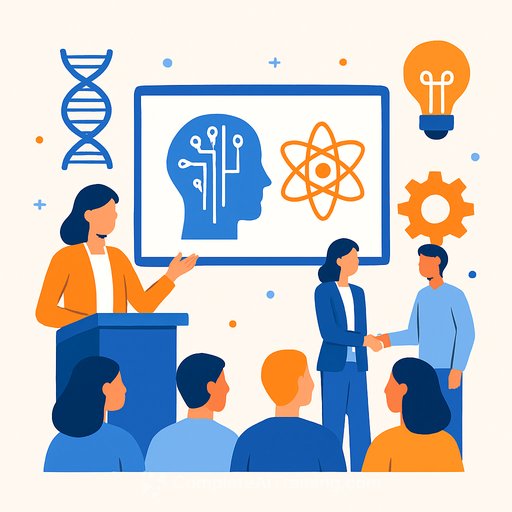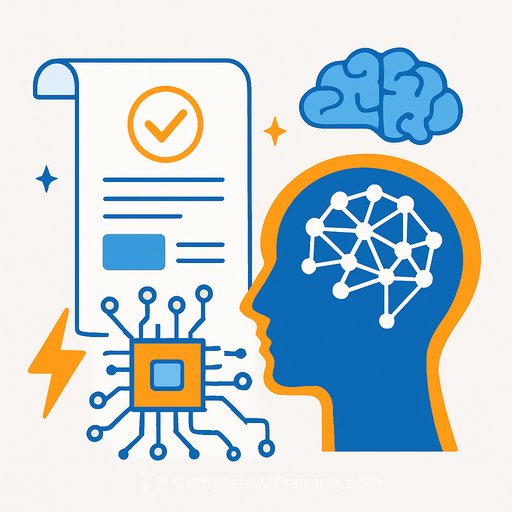Conference on AI+Science at Caltech a Success
November 21, 2025
The AI+Science conference at Caltech delivered what researchers want: repeatable results, workable pipelines, and clear use cases. The mood was pragmatic. Less hype, more data, and experiments that stand up to review.
Why it matters
AI is moving from demos to publishable science. The focus is shifting to uncertainty, reproducibility, and methods that integrate with existing theory and instrumentation. If your work touches simulations, experimental design, or large datasets, this is your moment to tighten process and increase output.
Core themes
- From prototypes to lab tools: Models need calibration curves, error bars, and versioned datasets-every time.
- Simulation + ML: Surrogate models, emulators, and physics-informed methods cut compute while preserving key invariants.
- Data discipline: Provenance, labeling standards, and FAIR principles improve reliability and reuse.
- Reproducibility by default: Code, seeds, environments, and model cards published with results.
- Human-in-the-loop: Active learning reduces labeling cost and steers experiments to high-value regions.
- Compute strategy: Hybrid HPC and accelerator workflows, with cost and time tracking built in.
- Safety and governance: Bias checks, IRB/data governance where required, and clear licensing.
What worked (you can copy this)
- Start with a simple baseline. Document it. Beat it with margin, not vibes.
- Define success beyond accuracy: AUROC/F1, calibration (ECE), constraint satisfaction, and confidence intervals.
- Add uncertainty quantification: ensembling, MC dropout, conformal prediction, or Bayesian layers.
- Use ablations and stress tests: feature removal, distribution shift, and counterfactual checks.
- Keep physics and priors in play: regularize to known laws or add constraints to loss functions.
- Track everything: dataset versions, preprocessing, seeds, hardware, and wall time. Automate reports.
- Release artifacts: code, configs, weights (if allowed), and a short "how to reproduce" guide.
Pitfalls to avoid
- Data leakage through normalization, splits by subject, or timestamp leakage.
- Overfitting to a single benchmark without external validation or holdout labs.
- Black-box claims with no interpretability or physical rationale.
- Ignoring distribution shift between training, simulation, and real-world measurements.
- Unclear rights and licenses on datasets, models, and third-party code.
Practical next steps for your lab
- Adopt a minimal MLOps stack: experiment tracking, data versioning, and environment capture.
- Create a shared metrics sheet per project with definitions and target thresholds.
- Design an active learning loop for your labeling or experiment queue.
- Stand up a small benchmark suite (public + internal). Freeze it. Track progress monthly.
- Schedule a quarterly reproducibility drill: rebuild from scratch on fresh hardware.
Resources
If you're formalizing risk and governance, the NIST AI Risk Management Framework is a solid starting point: NIST AI RMF.
For data reuse and provenance, anchor on the FAIR Principles: FAIR Principles.
Need structured training for your team? Explore role-based AI courses: Complete AI Training - Courses by Job.
Looking ahead
The take-home is clear: pair strong datasets with grounded models, quantify uncertainty, and make your work easy to reproduce. Do that, and your AI stack strengthens your science instead of distracting from it.
Set one goal now: by your next submission, include a reproducibility pack (data card, model card, exact env, and scripted run). Your future self-and your reviewers-will thank you.
Your membership also unlocks:






